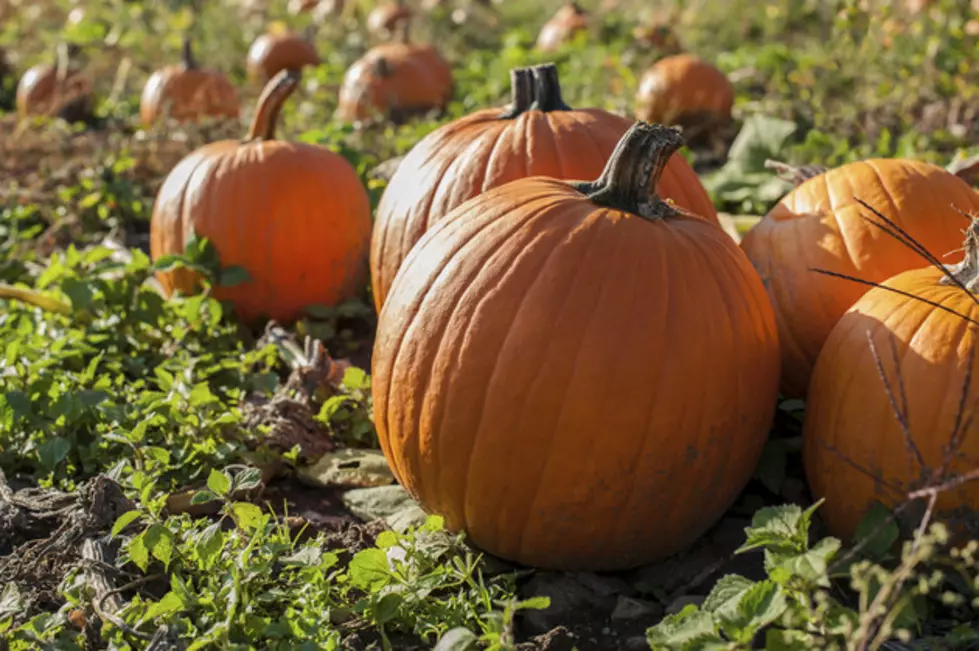
The Spooky Origins of Halloween — 10 Strange, Fun Facts About Witches, Pumpkins, Bonfires & More
October 31 is a day (and especially a night) full of spine-tingling surprises. The roots of our spookiest holiday's traditions — from pumpkins to trick-or-treating — run deep, their origins reaching back thousands of years to pre-Christian pagan festivals and superstitions. These quirky bits of trivia about the history of Halloween should help you better appreciate all the ghouls and witches wandering about (and your hoard of candy).
Halloween’s Irish Roots
The roots of Halloween stretch back to Europe, Ireland and pagan Gaelic harvest festivals — most notably the Celtic festival known as Samhain, which marked the end of the harvest season and the coming of winter. During the celebrations, spirit creatures like fairies and the souls of the departed could enter the realm of the living. Sometimes the arrival of these ethereal beings would be a blessing, but sometimes these trickster spirits would cause mounds of trouble for folks made out of flesh and blood. Either way, Samhain was an important holiday, but also a time when a person had to be on his or her guard.
Food Instead of Sugary Treats
Modern day trick-or-treating comes from the Celtic custom of dressing up as spirits in order to placate the dead, or copying their guise in an attempt to avoid detection from the various souls wandering about. In Celtic lands, poor people would go door to door and receive food from better-off neighbors on All Souls Day (Nov. 2) by offering to pray for their dead. This was called “souling.”
Immigrants to America and Canada kept these traditions alive, and in the early 1900s, “ritual pleading” for food transformed into trick-or-treating. As the decades passed, the advent of modern, American style Halloween came into being.
Jack and Jack-o'-Lanterns
Irish folklore has it that jack-o'-lanterns got their start with an extremely miserly chap who went by the name of Stingy Jack. This crafty fellow fooled the devil on numerous occasions and, as a result, his soul was condemned to hang about Earth for all eternity. Jack, barred from both heaven and hell, put the burning ember given to him by Beelzebub into the very first “jack-o-lantern,” in order to ward off any more encounters with the Evil One.
Black and Orange
Black and orange are the international colors of Halloween. Black, of course, is a sign of death, gloom and the foreboding night, which are all associated with Halloween. Orange is a traditional emblem of fortitude, survival and power, which signify the harvest, and the colors of fall. Halloween is where death (winter) takes over from the life-giving fall harvest, hence the mixtures of black and orange come festival time.
Halloween’s Financial Success
Despite all of the spooky history surrounding Halloween (or, perhaps, because of it?), it is, in fact, an incredibly successful holiday. Commercially speaking, only Christmas rakes in more dough. North Americans will spend billions of dollars on costumes, treats, party supplies and decorations this year. Need a short-term economic stimulus? Well, thank the souls of the dead for giving us a reason to celebrate (or fear), and spend our hard-earned cash during All Hallows' Eve.
Turnips Instead of Pumpkins
For folks living in the British Isles, jack-o'-lanterns were a fairly well-known commodity, but they weren’t carved out of pumpkins. Rather, they were made from turnips. While that may not sound like Halloween to today's fans of the costumed celebrations (turnip pie will probably never replace pumpkin pie), turnips used to be the real deal. Immigrants to the New World began using pumpkins as a less expensive alternative, and ever since, these large orange squash have become a symbol of Halloween.
Converting Pagans
Even a cursory look into the history of Halloween will let you know that there are lots of pagan, pre-Christian elements to this holiday, which celebrates the return of the dead. All Hallows’ Eve and All Saints’ Day used to come on the first and second of November, respectively. The Christian Church wanted to bring pagans into the fold, so they moved these celebrations to the end of October, in order to take away some of the spotlight of pagan holidays taking place at the same time. It seems the various traditions, in many ways, have now melded into one.
Harry Houdini Halloween Death
Harry Houdini, the Hungarian-born escape artist and illusionist, defied and “escaped” death many times. Ironically, his ultimate demise came on Halloween night in 1926. A student hammered him in the stomach one night in late October, before he was able to brace himself to properly withstand the blows. A fever took hold of him, as well a serious case of appendicitis. He continued to perform more shows, but a little more than a week later, on October 31, he died from his injuries.
Backwards Clothing May Give You 'Witch Vision'
If you really want to see a witch, there might be a trick to help you with your search. Supposedly, if you wear your clothing backwards, or inside out, and can walk backwards at the same time, you just might catch sight of witch zooming by on Halloween night. If you don’t see a woman on a broomstick flying through the sky after a few minutes, you’d better give up, otherwise you might accidentally stomp on some poor trick-or-treaters (or fall down and hurt yourself).
Halloween Bonfires
Reaching way back into the past, when Halloween was known as Samhain, setting light to a bonfire was a kind of sun worship, preparation for the long, dark winter ahead. Animal bones were often thrown onto the huge blazes as a sacrifice. Thus, “bone” fires became “bon” fires. Embers from the fire were carried home in turnips (sound familiar?) after the huge blaze died out. Bonfire embers were signs of good fortune.
More From KRFO-AM









